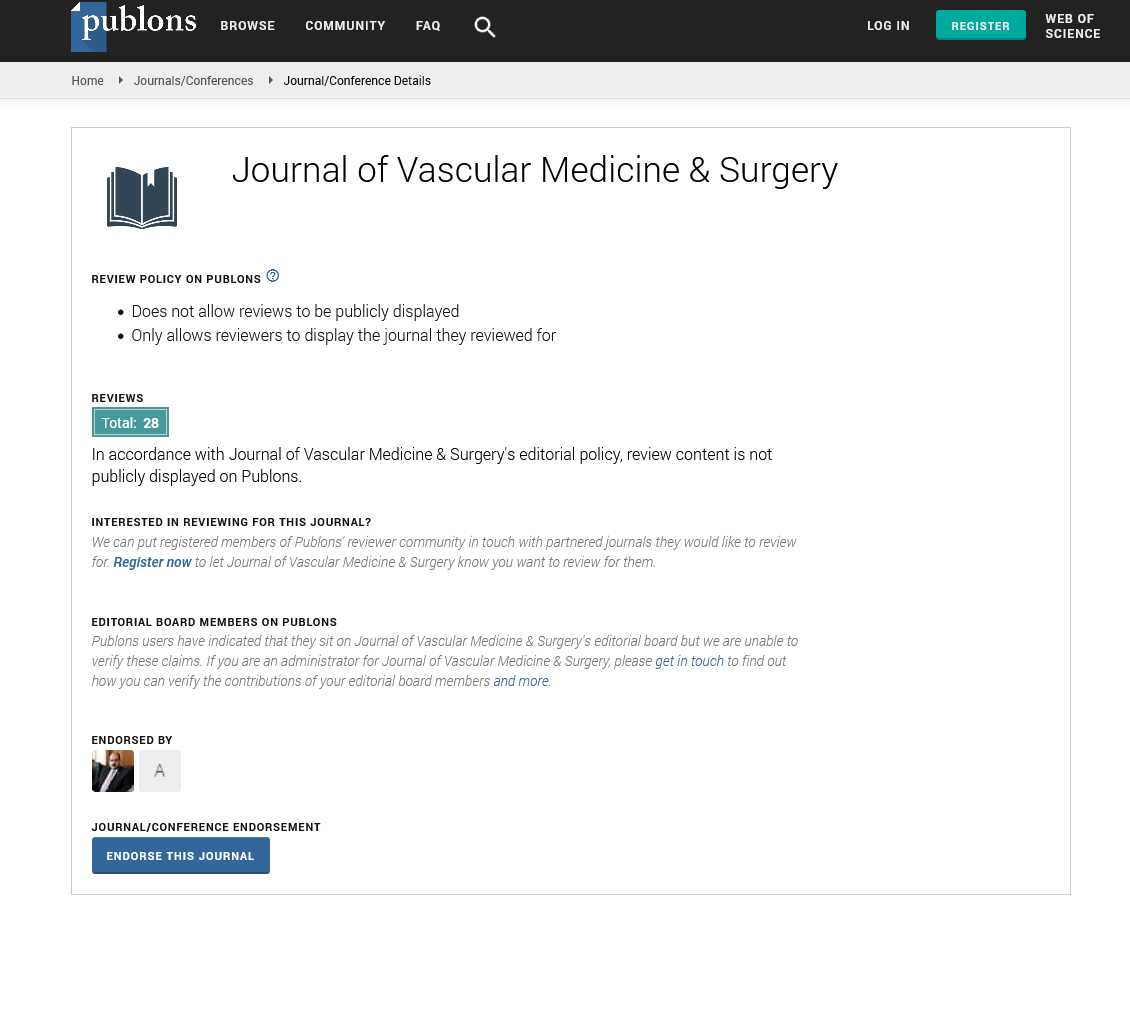Indexed In
- Open J Gate
- Academic Keys
- RefSeek
- Hamdard University
- EBSCO A-Z
- OCLC- WorldCat
- Publons
- Euro Pub
- Google Scholar
- SHERPA ROMEO
Useful Links
Share This Page
Journal Flyer

Open Access Journals
- Agri and Aquaculture
- Biochemistry
- Bioinformatics & Systems Biology
- Business & Management
- Chemistry
- Clinical Sciences
- Engineering
- Food & Nutrition
- General Science
- Genetics & Molecular Biology
- Immunology & Microbiology
- Medical Sciences
- Neuroscience & Psychology
- Nursing & Health Care
- Pharmaceutical Sciences
Perspective - (2024) Volume 0, Issue 0
Different Causes and Risk Factors of Heart Disease, and their Classification
Jackson Mikael*Received: 26-May-2024, Manuscript No. JVMS-24-26238; Editor assigned: 28-May-2024, Pre QC No. JVMS-24-26238 (PQ); Reviewed: 12-Jun-2024, QC No. JVMS-24-26238; Revised: 19-Jun-2024, Manuscript No. JVMS-24-26238 (R); Published: 28-Jun-2024, DOI: 10.35248/2329-6925.24.S22.546
Description
Heart disease represents a wide range of disorders that affect the structure and function of the heart. It remains the leading cause of death globally, claiming millions of lives each year.
Types of heart disease
Coronary artery disease is the most chronic type of cardiovascular disease. It occurs when the coronary arteries, which supply blood to the heart muscle, become narrowed or blocked due to plaque buildup (atherosclerosis). This reduces blood flow to the heart, leading to chest pain (angina), heart attacks, and other complications. Heart failure, also known as congestive heart failure, occurs when the circulatory system is unable to circulate blood to fulfill the body's requirements. This can result from various conditions, including CAD, high blood pressure, and heart valve disease.
Arrhythmias are irregular heartbeats that can be too fast, too slow, or erratic. They occur when the electrical signals that regulate the heart's rhythm are disrupted. Common arrhythmias include atrial fibrillation, tachycardia, and bradycardia. Symptoms can range from palpitations and dizziness to fainting and chest pain. Heart valve disease is characterized by damage or abnormalities in the heart's valves, which impact blood flow through the heart. This can lead to conditions such as mitral valve prolapse, aortic stenosis, and tricuspid regurgitation. Symptoms may include shortness of breath, exhaustion, and swelling in the feet and ankles.
Cardiomyopathy is a group of disorders that cause the heart muscle thicken. This affects the heart's ability to circulate blood effectively. Types of cardiomyopathy include dilated cardiomyopathy, hypertrophic cardiomyopathy, and restrictive cardiomyopathy. Symptoms can involve shortness of breath, fatigue, and arrhythmias. Congenital heart abnormalities are complications of structure that occur at childbirth. These defects can damage the heart's structures, valves, or blood arteries.
Depending on the severity, symptoms can range from mild to life-threatening and may include rapid breathing, cyanosis (bluish skin), and poor weight gain in infants.
Causes and risk factors
Atherosclerosis, the formation of plaques in the arteries, it is a major cause of heart disease. Plaques are composed of fat, cholesterol, calcium, and other substances that accumulate on the artery walls, narrowing and hardening them. This restricts blood flow and can lead to heart attacks and strokes. Hypertension, or high blood pressure, increases the heart's pressure, causing it to become thicker and narrow. This can damage the blood vessels and lead to heart disease. Risk factors for hypertension include obesity, a sedentary lifestyle, excessive salt consumption and genetic predisposition.
High levels of Low-Density Lipoprotein (LDL) cholesterol, frequently referred to as "bad" cholesterol, contribute to the formation of plaques in the arteries. Alternatively, High-Density Lipoprotein (HDL) cholesterol, or "good" cholesterol, helps to remove LDL cholesterol from the bloodstream. Maintaining a healthy balance of these lipoproteins is essential for heart health. Smoking affects the blood arteries, decreases oxygen levels in the blood, and increases the risk of atherosclerosis and clotting of blood. It is a significant risk factor for heart disease, and avoid smoking can substantially reduce this risk.
Diabetes, particularly type 2 diabetes, is a major risk factor for heart disease. High sugar levels in the blood can damage the blood vessels and nerves that control the heartbeat. Effective management of blood sugar levels through diet, exercise, and medication is essential for reducing the risk of heart disease in people with diabetes. Excess body weight, particularly around the abdomen, increases the risk of heart disease. Obesity is frequently associated with other risk factors such as high blood pressure, high cholesterol, and diabetes. Maintaining a healthy weight through a balanced diet and regular physical activity is important for heart health.
Citation: Mikael J (2024) Different Causes and Risk Factors of Heart Disease, and their Classification. J Vasc Surg. S22:546.
Copyright: © 2024 Mikael J. This is an open access article distributed under the terms of the Creative Commons Attribution License, which permits unrestricted use, distribution, and reproduction in any medium, provided the original author and source are credited.

